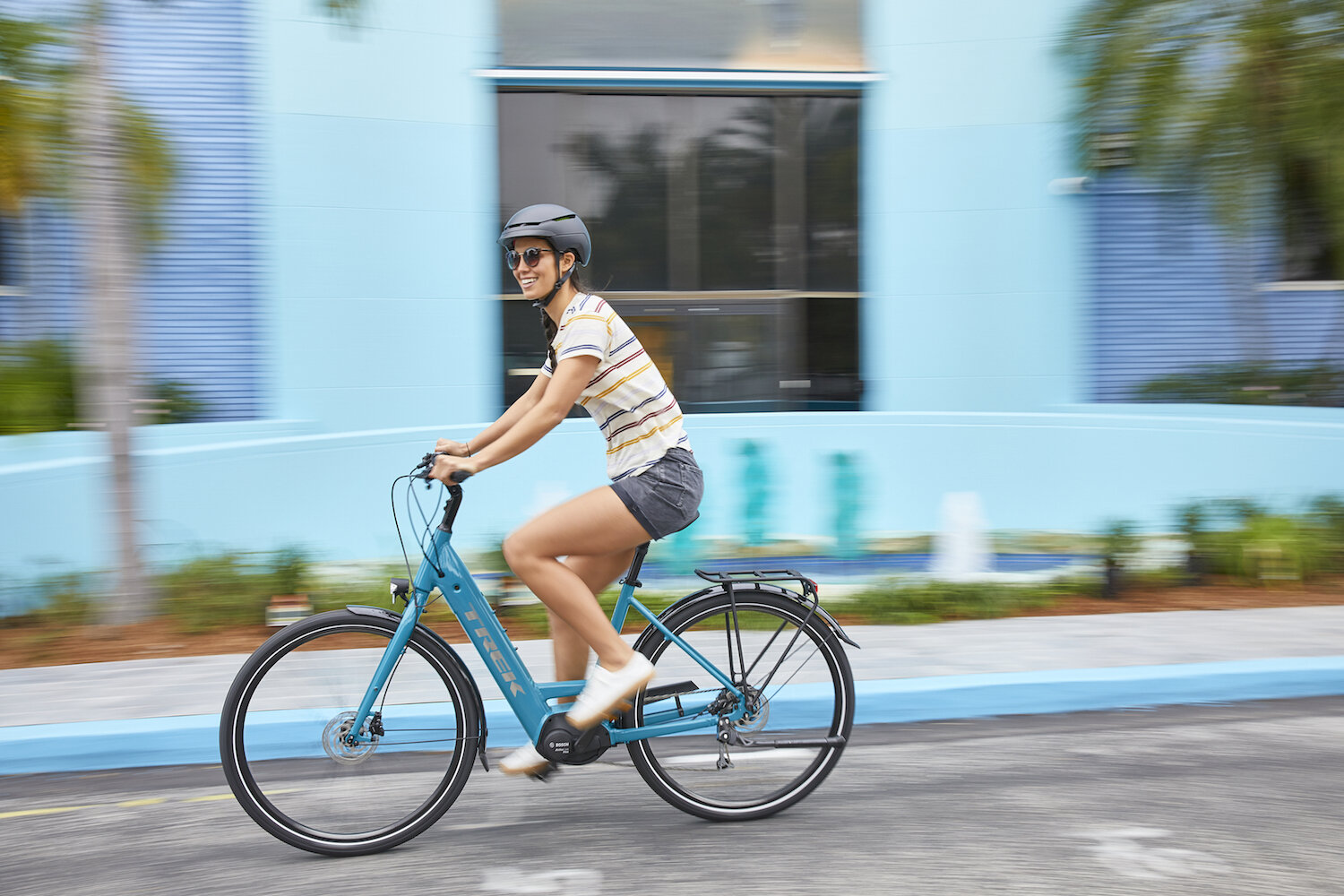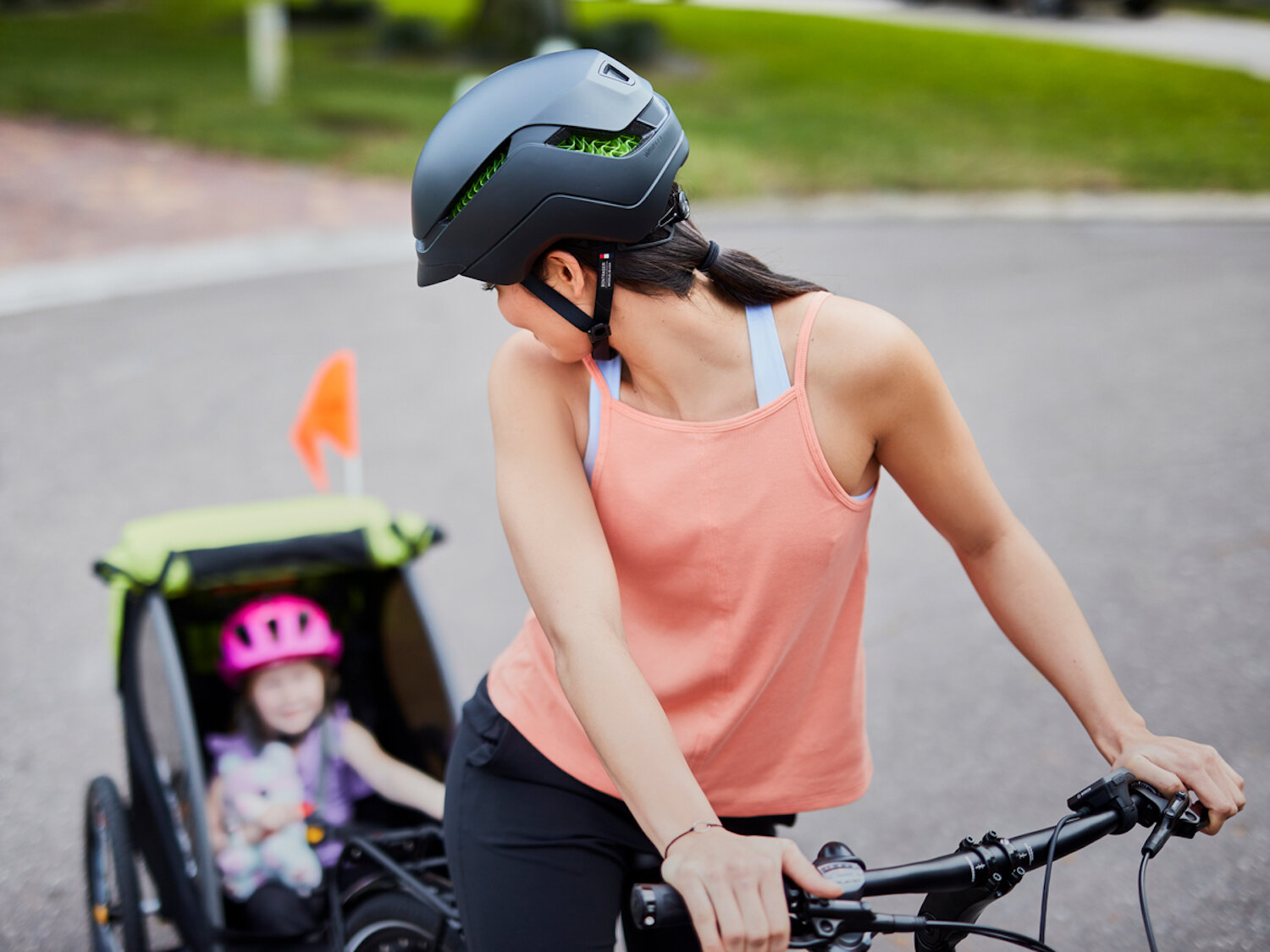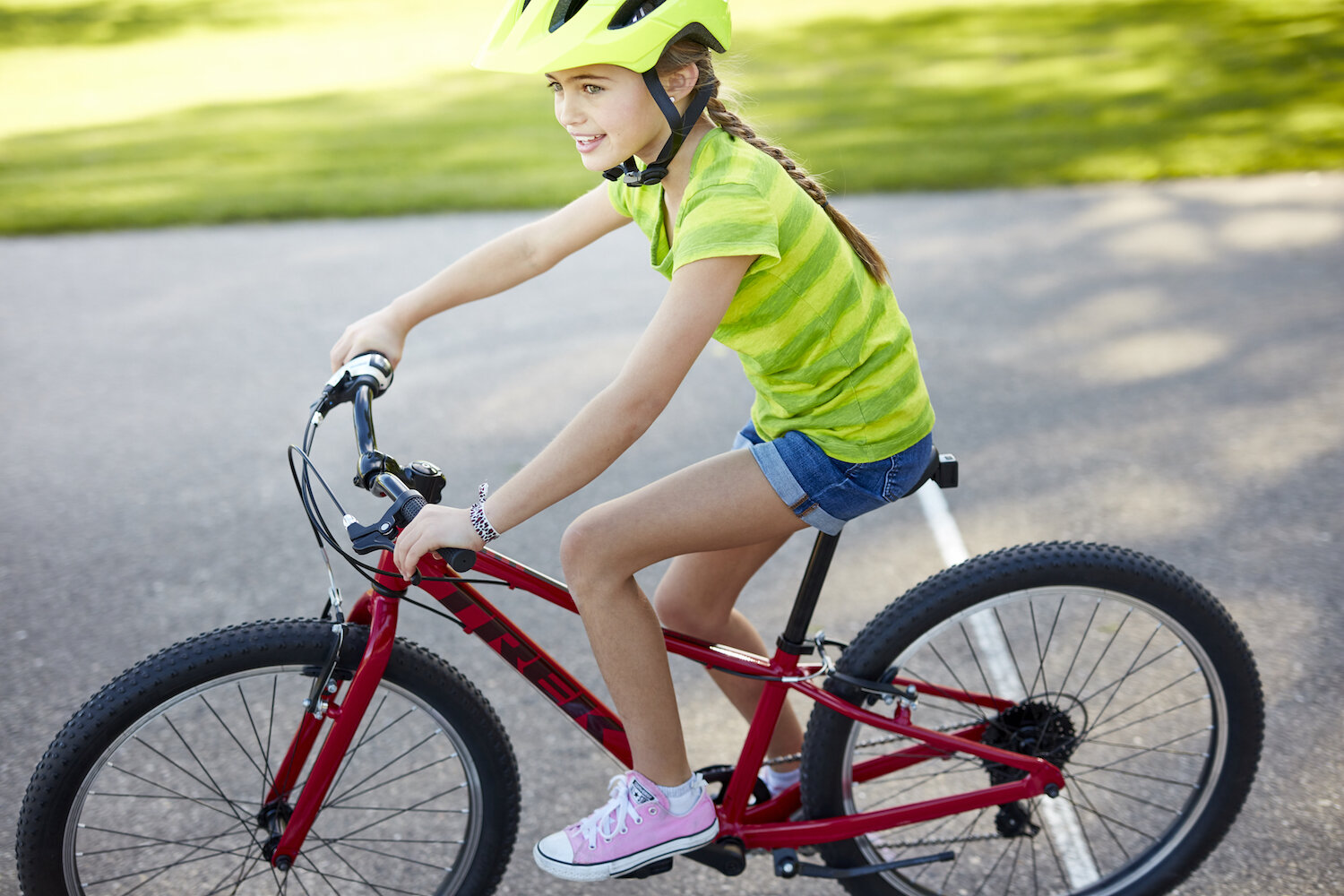Getting Around By Bike: Rules of the Road
Riding a bike is an excellent alternative to driving a motor vehicle for a number of reasons including personal well-being (great exercise!), community health (less traffic!), and the welfare of our planet (reduced emissions!).
Cycling has also become a popular alternative to using public transportation and ridesharing (Uber and Lyft) amid concerns about COVID-19.
Being well versed in the “rules of the road” is crucial when getting around by bike. Read on for a primer on the laws and safety measures that apply to riding bikes on our community roadways.
It’s the Law
In California, cyclists have the same rights and responsibilities as motorists. Cyclists who break the law receive the same penalties as motorists who do so.
Cyclists are legally obligated to obey speed limits, follow traffic signals, signal turns and stops, stop at stop signs, and yield to pedestrians as well as other vehicles.
Additionally, cyclists are required to ride on the right half of the road in the same direction traffic is flowing. Exceptions include when passing, making a legal left turn, riding on a one-way street, riding on a road that is too narrow, or when the right side of the road is closed due to road construction.
Where in the Lane?
There is some confusion as to exactly where cyclists are required by law to travel on that right half of the road. Let us clear that up for you.
If you’re traveling as fast as motor vehicle traffic, you may ride wherever you feel comfortable. That could be in the bike lane if one is available, hugging the side of the road if that feels better to you, or right down the middle of the motor vehicle travel lane. This last option is referred to as “taking the lane.”
Traveling slower than the flow of traffic? If there is a bike lane available, California law requires cyclists moving slower than traffic to travel in it. You may move out of the bike lane for the following conditions: when passing; when preparing for/making a left hand turn; when avoiding a hazard; and when approaching a place where a right turn is authorized.
If you’re traveling slower than the flow of traffic, and there is NO bike lane available, the law mandates you ride as close to the right side of the road “as practicable.” That said, when a lane is too narrow for a motor vehicle and bicycle to safely share, the cyclist may legally “take the lane.”
Furthermore, there are other conditions in which a cyclist may “take the lane” even if moving slower than the flow of traffic. These conditions include: when passing; when preparing for/making a left hand turn; when avoiding a hazard; and when approaching a place where a right turn is authorized.
It’s important to know that many motorists aren’t aware of a cyclist’s right to “take the lane” in the conditions reviewed above. Always be attentive and cautious.
WHEN A MOTORIST MAKES A RIGHT TURN
In the section above, you may have noted that even when traveling slower than the flow of traffic, a cyclist may “take the lane” when approaching a place where a right turn is authorized.
Simply put, this means moving from the bike lane or far right side of the road into the motor vehicle traffic lane when approaching right hand turns.
This is because, in California, motorists may NOT make a right turn directly from their motor vehicle traffic lane, cutting across the bike lane. They are required to “turn from the curb” when making a right hand turn.
Cyclists are allowed to pass around the left side of the motorist who is merging into the curb lane for a right hand turn, ensuring safety for all.
Three Feet for Safety
The Three Feet for Safety Act went into effect in 2014. This requires motorists to give at least three feet of clearance when passing bicyclists.
When passing with a three-foot buffer is not feasible, drivers must slow down and wait to pass when it’s safe to do so.
We urge cyclists to stay alert at all times; don’t assume that all motorists will abide by this law — take charge of your own safety.
Sidewalks, Toll Bridges & Freeways, Oh My
Individual cities and counties control whether cyclists may ride on sidewalks. Santa Cruz area regulations can be viewed in this chart from the Santa Cruz County Transportation Commission (SCCTC).
There’s no such gray area with regard to freeways, expressways and toll bridges: bicycles are not allowed on any of these, except with express permission from the California Department of Transportation.
While Riding, Know the Law ...
Wear a helmet if you’re under the age of 18 (this applies to the cyclist and any passenger/s).
No earplugs, earphones, or headset that covers both ears (hearing aids are of course allowed).
Use hand signals to communicate turns and braking. To turn left, extend your left arm straight out to the left side; to turn right, extend your left arm to the left side, but bend it upward at a 90-degree angle. To brake, extend your left arm to the left side and bend it downward at a 90-degree angle.
When carrying items while cycling, you must be able to keep at least one hand on the handlebars.
No stopping on a bicycle path.
No “hitchhiking” (in other words, attaching yourself to another vehicle on the roadway).
Yield the right-of-way to pedestrians within marked crosswalks or within unmarked crosswalks at intersections.
Do not operate a bicycle while under the influence of drugs or alcohol.
… And Ride Smart
Stay alert, scanning ahead and anticipating issues.
Ride in control, at a speed that allows prompt reaction to the unexpected.
Be prepared to brake at any time, so keep your hands on the brake levers when not making hand signals.
Keep a safe distance — at least four feet — between yourself and drivers.
Be vigilant for doors opening when passing parked cars.
Be extremely careful crossing driveways, parking lot entrances/exits, and side streets.
Keep an eye out for vehicles coming from the opposite direction who might turn left across your path.
Parking
It’s against the law to leave your bike on its side on the sidewalk, park it on a bicycle path, or park it in a way that obstructs pedestrians.
Savvy cyclists know that you never, ever, EVER leave your bike unlocked while unattended … even for a few seconds. Utilize an e-locker or bring your bike into your workplace or other destination if feasible; otherwise, be sure to use a solid lock.
Stay tuned for a post about the best practices for keeping your bike safe. In the meantime, feel free to call our crew for suggestions!
Bike Set Up
We are often asked about what’s required when cycling on roadways in the dark. By California law, your bike must be equipped with ALL of the following:
Front lamp with white light that illuminates the road ahead of you and is visible from a distance of 300 feet in front and from the sides of the bicycle. This can be a light attached to the bicycle or the cyclist (such as a helmet-mounted light).
Rear red reflector or solid or flashing red light with built-in reflector that is visible from a distance of 500 feet to the rear when directly in front of a motor vehicle’s headlights.
White or yellow reflector on each pedal, shoe, or ankle visible from the front and rear of the bicycle from a distance of 200 feet.
White or yellow reflector on each side forward of the center of the bicycle, and a white or red reflector on each side to the rear of the center of the bicycle. Bikes that are equipped with reflectorized tires on the front and the rear need not be equipped with these side reflectors.
Although running a light during the day is not the law, we highly recommend you do so for increased safety. Check out Four Ways to Increase Your Visibility for more information and additional tips on being seen.
In addition to lights and reflectors, you should be aware of the laws that govern other bicycle components such as brakes, handlebars, and seats.
The brake must enable the operator to make a one braked wheel skid on dry, level, clean pavement.
Handlebars cannot be higher than the cyclist’s shoulders.
The bike must have a permanent, regular seat, unless it is designed by the manufacturer to be ridden without one. Passengers who are four years of age or younger, or weigh less than 40 pounds, must have a seat that keeps them in place and protects them from moving parts.
The bike must be small enough for the rider to stop, support it with one foot on the ground, and start safely.
Co-Commuting
If you’re commuting to work or running errands with someone else within the City of Santa Cruz, you are required to ride single-file except on paths or parts of a roadway designated exclusively for the use of bikes.
Outside of the City of Santa Cruz, you must be traveling as fast as vehicular traffic in order to ride two or more abreast.
E-Bikin’
Electric bikes have access to bike paths, bike lanes, designated bike routes, and protected lanes, but the class of the e-bike determines which bikeway can be used.
Basically, California state law allows the use of Class 1 and 2 electric bikes (top assisted speeds of 20 mph) wherever traditional bikes are allowed unless a sign specifically prohibits them.
Class 3 electric bikes (top assisted speeds of 28 mph) may be used in bike lanes or separated bikeways adjacent to the roadway, but NOT on bike paths.
Get detailed information on the four classes of California bikeways, and which class(es) of electric bikes are allowed on them in our Guide to Electric Bikes.
Licensing
If you bike within Santa Cruz city limits (which includes the UCSC campus), you are required by Santa Cruz Municipal Code to register your bike. Registration is free and never expires.
Besides complying with the law, registering your bike can help keep it safe. The license sticker issued by the Santa Cruz Police Department may deter bike thieves, and having your bike registered may aid police in finding your bicycle if it is ever lost or stolen.
Review bicycle licensing requirements for Capitola, Watsonville, and Scotts Valley in this chart published by the SCCTC.
A Final Word
We hope this information will help you get around by bike safely and with confidence.
Please keep in mind that although the content above has been collected from various credible sources and is accurate to the best of our knowledge, Epicenter Cycling assumes no responsibility or liability for any errors or omissions in the content.
Furthermore, this content is for informational purposes only and not for the purpose of providing legal advice. Contact an attorney (CalBike provides a list of bicycle-friendly lawyers here) to obtain advice with respect to any particular issue or problem.
We recommend browsing the websites listed as references in our post Bicycle Laws in Santa Cruz, California to further familiarize yourself with ever-changing laws and regulations. This post also points you to the specific vehicle code for each law.
#GoByBike
And now that you’re getting out by bike so much more, inspire a cultural movement by tagging a photo of your ride on social with #GoByBike. Plus, have some added fun by playing #GoByBike Bingo by downloading your free bingo card here!
“Rules of the Road” is part of a series of blog posts designed to help you get the most out of riding a bike as an alternative to driving. Check out the recently published “How to Carry Your Stuff” and “Route Planning” and stay tuned for further posts on safety, what to wear, maintaining your bike, and more.





